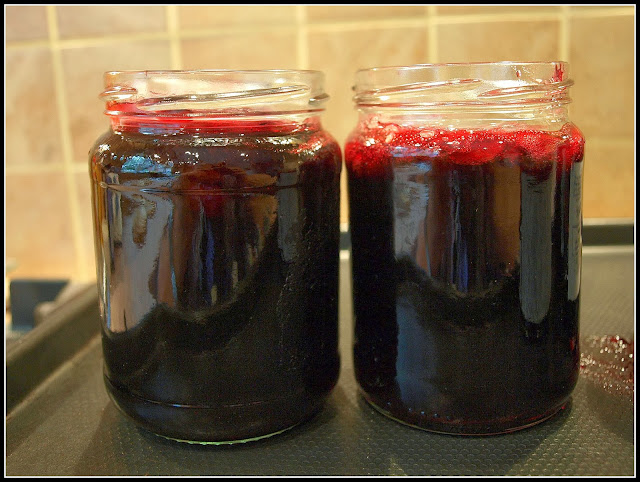Well, September is just about finished, but my tomato harvest isn't!
The cucumbers are finally giving up. The plants look very tired. The leaves flop during the daytime, though they revive again overnight.
I hardly dare to think how many fruits they produced between them. It was a huge number. The ones being produced now are not prime specimens - mostly rather yellow and "weedy".
We have had so many cucumbers that Jane even made a batch of curried cucumber pickle this week, which I expect she will write about on her blog Onions and Paper.
I hardly dare to think how many fruits they produced between them. It was a huge number. The ones being produced now are not prime specimens - mostly rather yellow and "weedy".
We have had so many cucumbers that Jane even made a batch of curried cucumber pickle this week, which I expect she will write about on her blog Onions and Paper.
 |
| "Conference" pears |
It's not a lot of pears, is it? Still, it's better than no pears. The big one in the middle of the group is enormous. It weighs 280 grams. Pears like this are traditionally ripened indoors, so they have joined the multitude of tomatoes on the Dining-Room table.
A rather different crop that I picked this week was a couple of Brussels Tops (the ones I wrote about on Saturday). They are very much like Spring Greens, and they went very nicely with the venison we bought at the Farmers' Market on Saturday.
I have harvested my very last potatoes of the year - two pots of "Pink Fir Apple". At 1.6kgs, the yield was not bad, but several of the tubers were covered with scab. This makes them unsightly, but is not a major problem, since it is only skin-deep and can be removed by scrubbing the tubers before cooking. (Peeling PFA potatoes is not really possible, due to their very knobbly shape).
This week I'm not going to post a picture of Runner Beans, because I'm sure you are all bored of looking at Runner Beans. I have picked a few, though not many. I have also picked more chillis, and the basket of them drying in the airing-cupboard is gradually filling up.
This week I'm not going to post a picture of Runner Beans, because I'm sure you are all bored of looking at Runner Beans. I have picked a few, though not many. I have also picked more chillis, and the basket of them drying in the airing-cupboard is gradually filling up.
My final harvest of the week is not one from my garden, but a wild one instead, from the local hedgerows: Sloes and Rosehips.
These have now gone into a batch of jelly, which I will write about soon.
That's it from me for this week. Why not visit Daphne's Dandelions to see what other people have been harvesting?

























































